Dan Burrill November 10, 2022 All Feature Vehicles

Rick Hoback didn’t get into land speed racing until 2011, but he’s come a long way fast. It all began when he saw an article in a magazine about a top speed challenge in North Carolina. He had been involved in drag racing since he was in high school and this event really appealed to him.
“My uncle and I drove down from Ohio to North Carolina in April in his 2001 Corvette Z06 to check this out, but it was snowing,” Rick said. “As soon as we got there, we realized that this was a really cool event. While we were there we got to see the cars and what was happening, and I knew that this was something I really wanted to be a part of.”
Right then and there he decided, “I’m going to buy myself a Corvette. I’m definitely buying one. I just have to find something I can afford. So I called back home and a friend of mine actually had one for sale on his car lot, and sight unseen I pretty much made the offer.”
As it turned out, the car had a little bit of damage: Water had leaked into it and there were a few other minor issues, but it was all stuff he knew he could fix. On the positive side, the price was right, it’s a ’99 model, and he only paid $12,500 for it.
As soon as they got home and picked up the car, Rick began the modifications with a six-point harness, a harness bar and other necessary upgrades to make the Corvette go 150 mph at its next event.
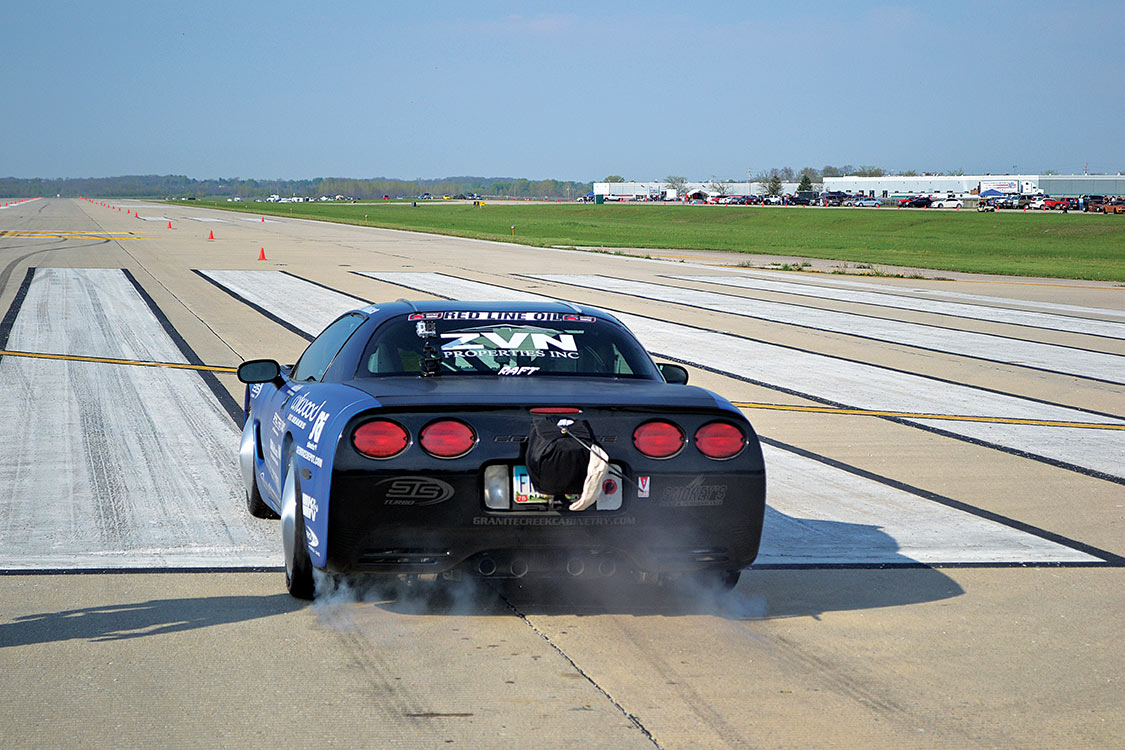
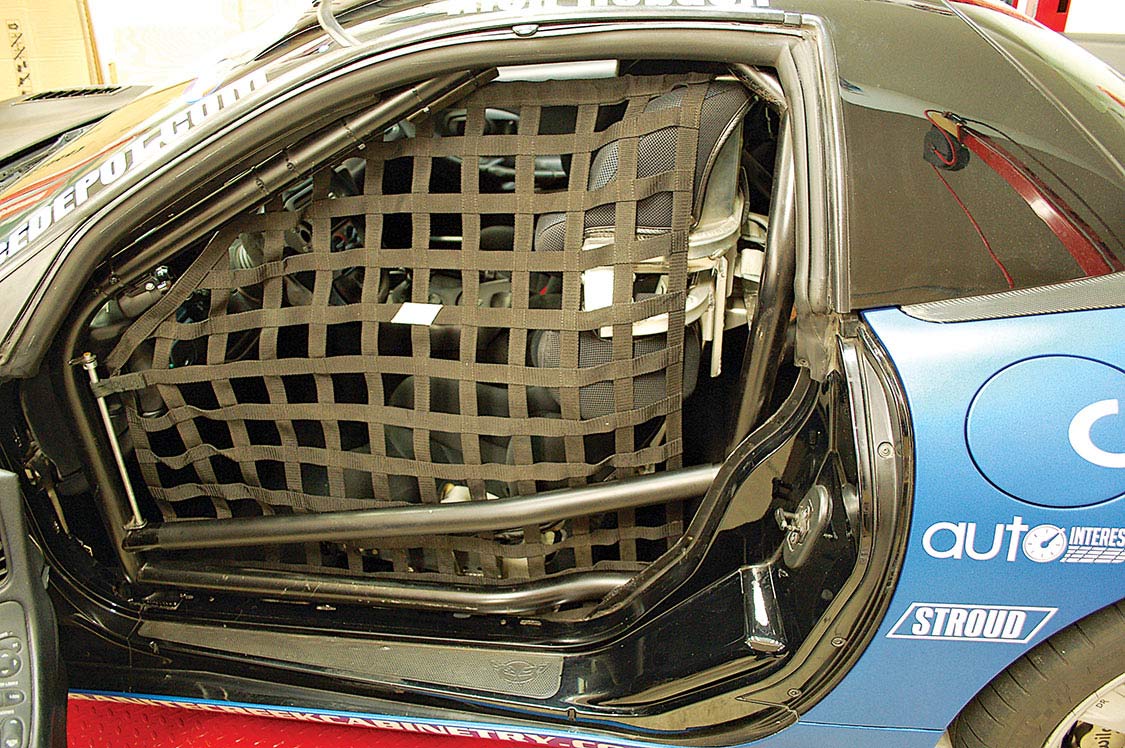
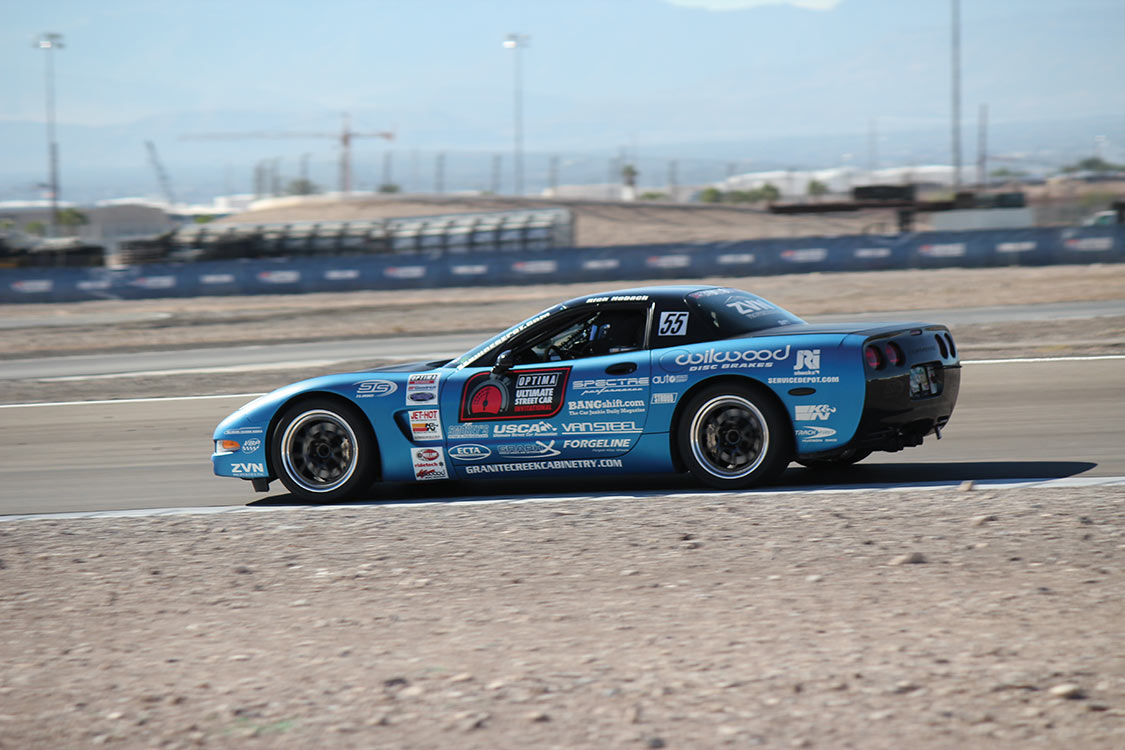
After making a few runs where the ’Vette lifted at the end of the track to get through the traps, he decided to go all out. That’s when the real build started. Rick wanted to see how fast he could go on a budget, so he contacted STS to make a rear-mounted 67mm twin-turbo system. The crew at STS was game; they also wanted to see if Rick could go 200 mph with nothing but turbos on a stock engine.
The ’Vette runs a stock LS1 engine; nothing has been touched. By going with the turbos, Rick figured he could get unlimited power, as much as the engine would hold. He’d just keep turning up the boost until it came apart—and that’s what he did.
“We bolted them on in a weekend and started tuning, and to date, the car has 91 dyno pulls on it,” Rick said. “We don’t use the dyno anymore; we just tune it at the track, and we keep turning up the boost.”
Now in his fifth year of racing, the car is still running strong. “In addition to running the land speed record, I put it on the road course and I autocross it,” Rick said. “And the car is run in the Optima Street Car Challenge events.”
The ’Vette works well in a variety of events, but it really excels in the standing mile land speed events. Rick has set six records with the car so far. He currently holds the fastest speed of 202 mph.
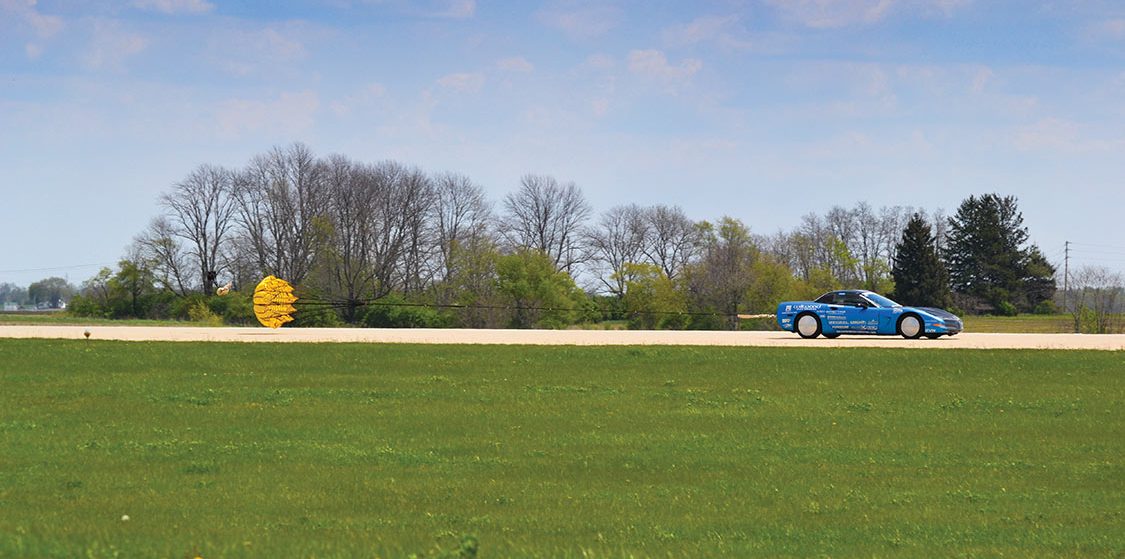
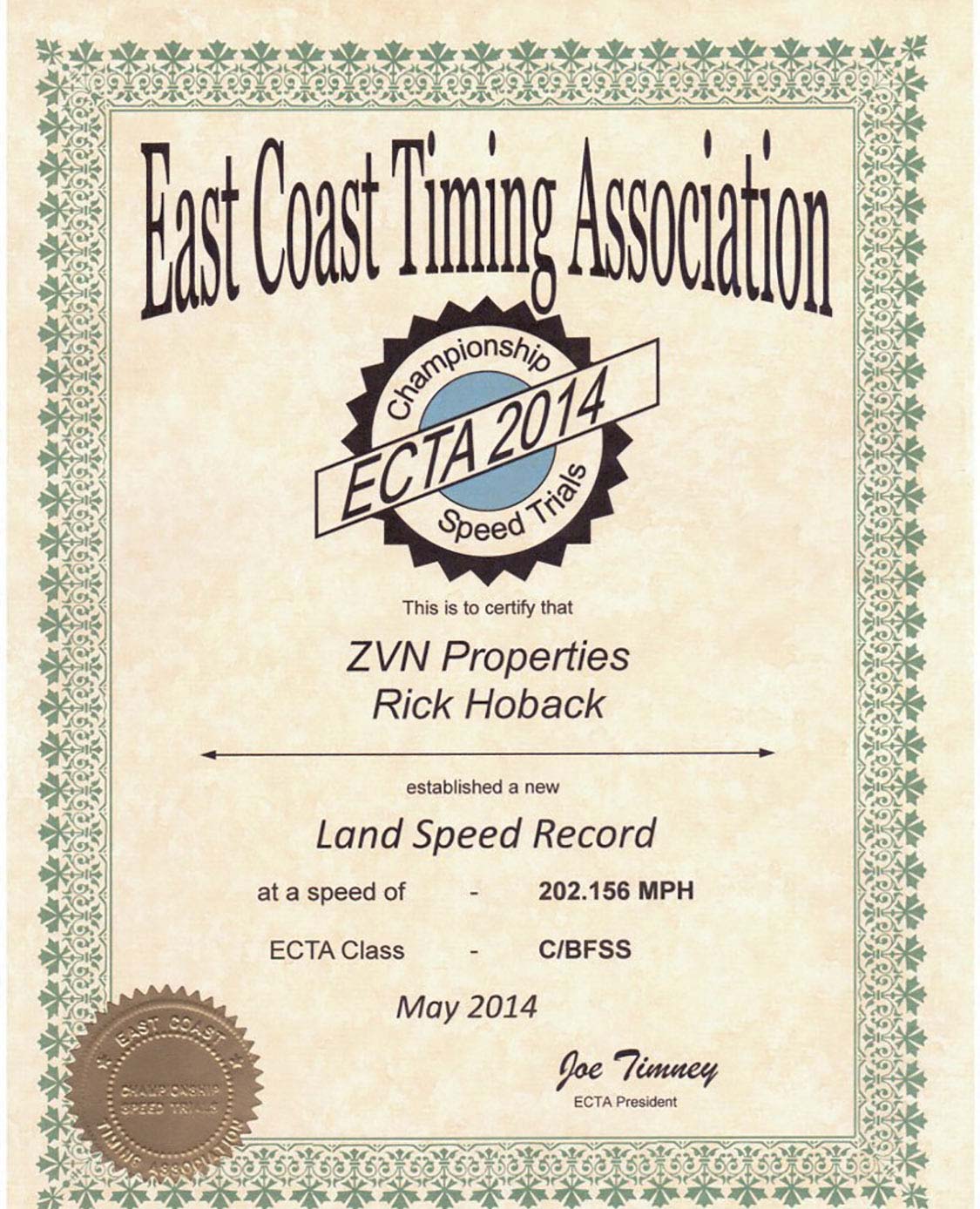
For a while he was stuck in the 180-plus mph zone. That’s when he made the decision to keep turning up the boost on every pass until the car hit the 200-mph mark or it blew the engine. Finally, he hit the 202 mark, running 24 pounds of boost.
“The scary part of the ride is the wind blowing when you are at speed. You are getting shoved all over the place, but for me, the anticipation of the engine letting go is the worst.” Rick told us.
The car produces 850 hp to the wheels, and to push a stock engine time and time again, pass after pass, and then to road course it in between, is asking a lot. To date, though, the engine is still running and in one piece.
Rick runs the land speed event four times a year, and in between, the car is run on a road course. The East Coast Timing Association sanctions these events on old airport runways. The event is a standing mile where the car starts from a dead stop. On the airport runway in Ohio, where these runs were made, the car starts on a painted surface, so there is no burnout. At the start, the car rolls in first gear, and then when it gets to second, the car is on the concrete and its hard acceleration all the way to the finish. Of course, the surface is not perfect, and it’s possible to break traction any time during the run.
He Made the Decision to Keep Turning Up the Boost on Every Pass Until the Car Hit the 200-Mph Mark or it Blew the Engine. Finally, He Hit the 202 Mark, Running 24 Pounds of Boost.

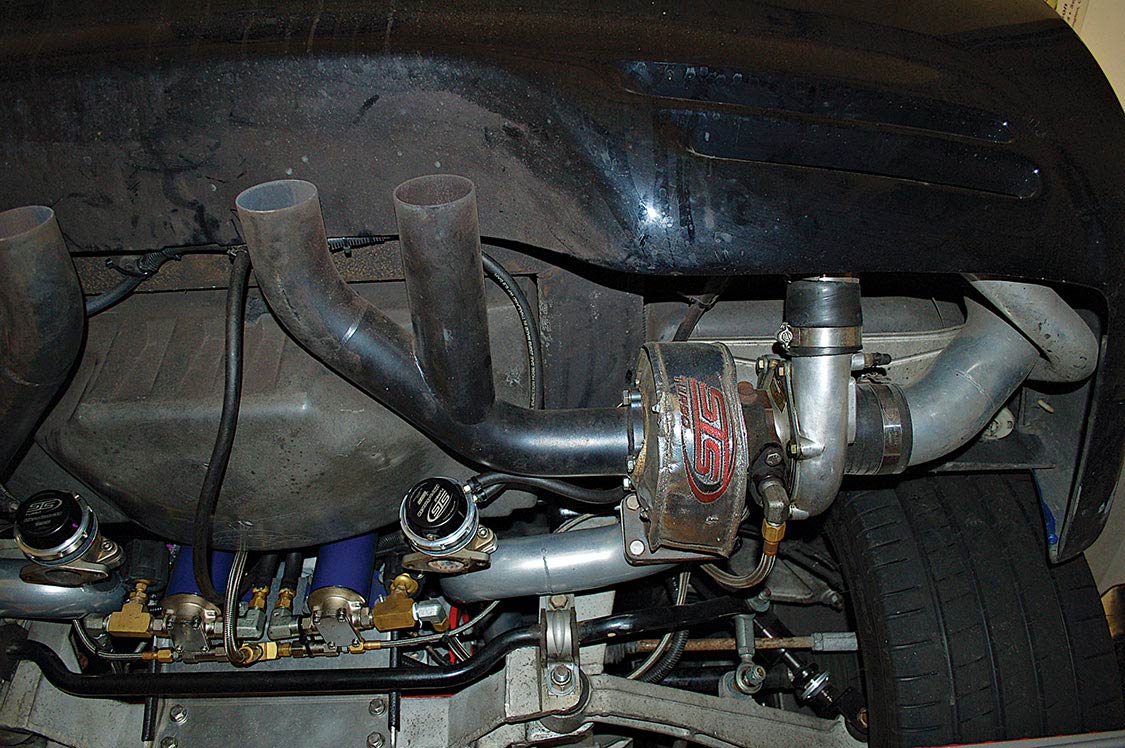
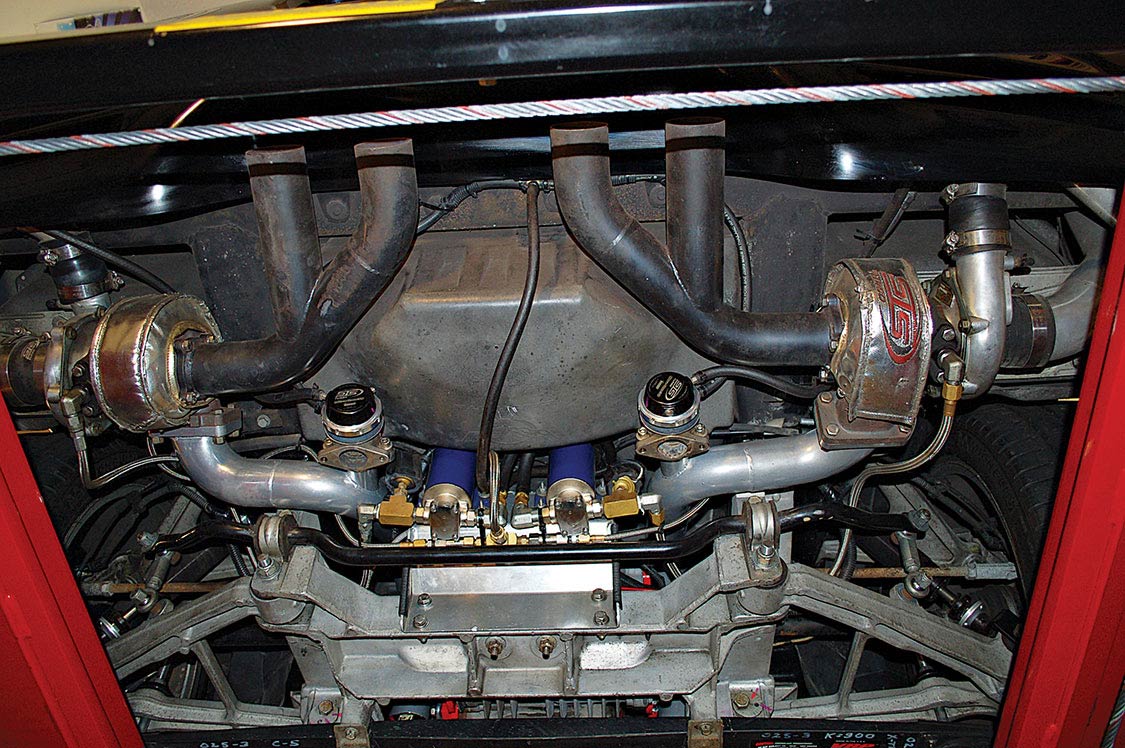
One thing that makes these runs difficult and sometimes tricky is that the wind is constantly blowing. “I’ve had my steering wheel turned at probably 30 degrees to the left, and the wind is still pushing the car to the right,” Rick told us.
To make the car more aerodynamic, Rick used cardboard and duct tape along with an air dam made out of plastic, which is also held in place with duct tape to reshape the frontal area, and the car picked up the additional 6 mph to set the record. In true race car fashion, the wheels are covered with Dean Moon aluminum racing discs.
To go from land speed runs to Optima competition requires a lot of preparation. The suspension setups are different, wheels and tires must be changed, and there are several other necessary alterations, such as brakes and pads, depending on the track and conditions. The car still runs on pump gas; however, on the land speed runs water and alcohol are injected to help with the cooling.
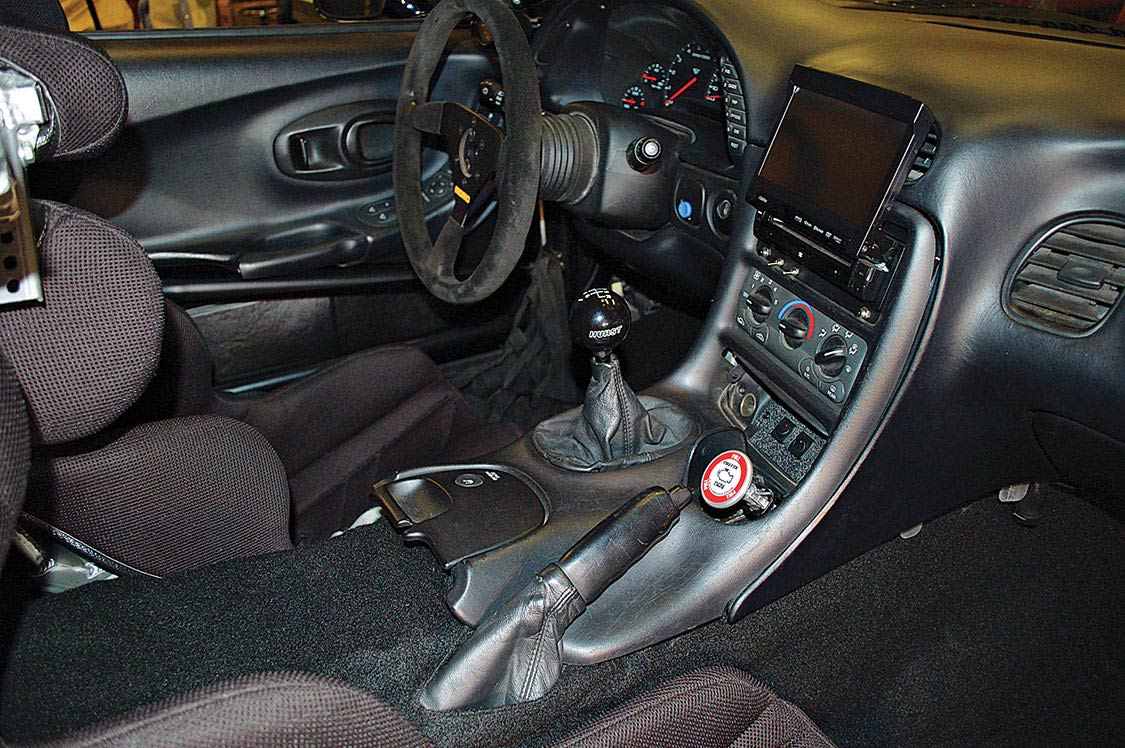
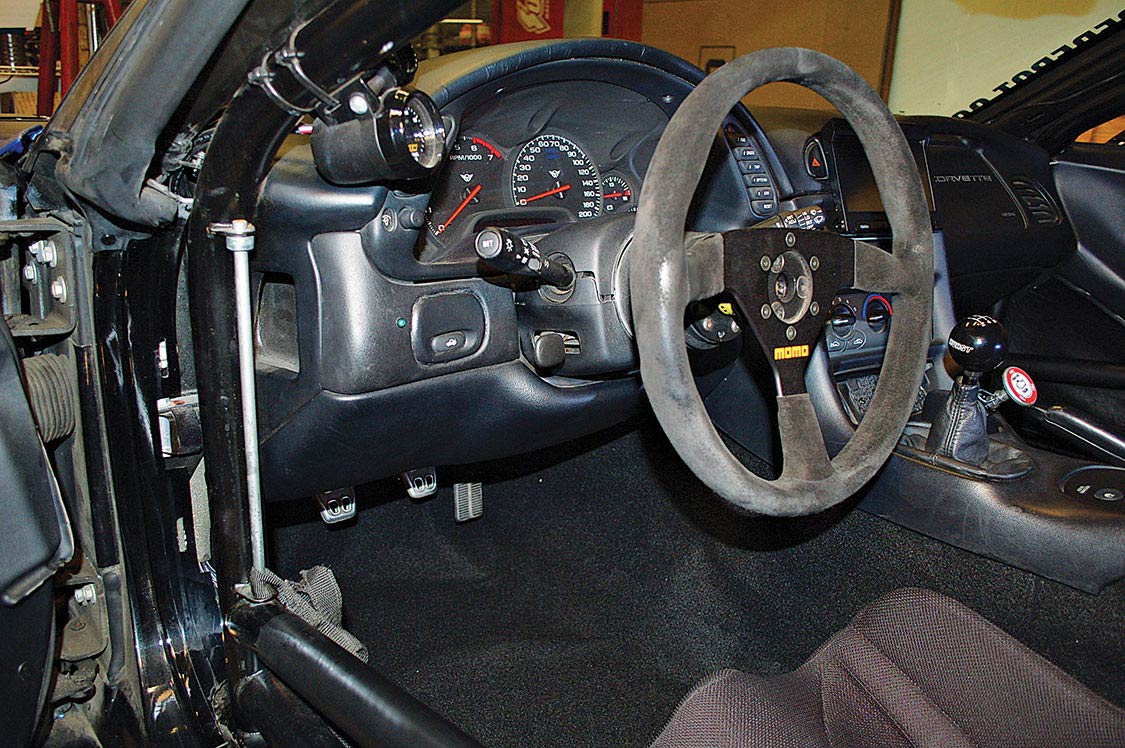
The venerable C5 Corvette has dominated every type of racing where it has been entered. It’s a great all-around performance design.The car has dominated every type of racing where it has been entered. It’s a great all-around performance design.
Optima’s Search for the Ultimate Street Car began with an idea back in 2008. Cam Douglass decided to take SEMA Show cars and put them on the track so everyone could experience the “race car-level” performance that the aftermarket can provide for real street cars. He hooked up with Jimi Day, and the two of them crafted the format and rules of today’s OPTIMA Street Car Series.
Event cofounders, Cam and Jimi, walked the massive expanse of the SEMA Show every year, but often left wondering if the incredible machines on display were just nice showpieces or were actually capable of being driven on the street and enjoyed on the track.
They decided to answer that question in 2008, renting out the race track at Spring Mountain Motorsports Ranch in nearby Pahrump, Nevada and inviting cars from the 2008 SEMA Show to come run on the track after the show in the inaugural Optima Ultimate Street Car Invitational (OUSCI). Fewer than 30 cars accepted the invitation that first year, and many were not running by the end of the day. However, the event struck a chord with the automotive aftermarket and word quickly spread through magazines and TV coverage.
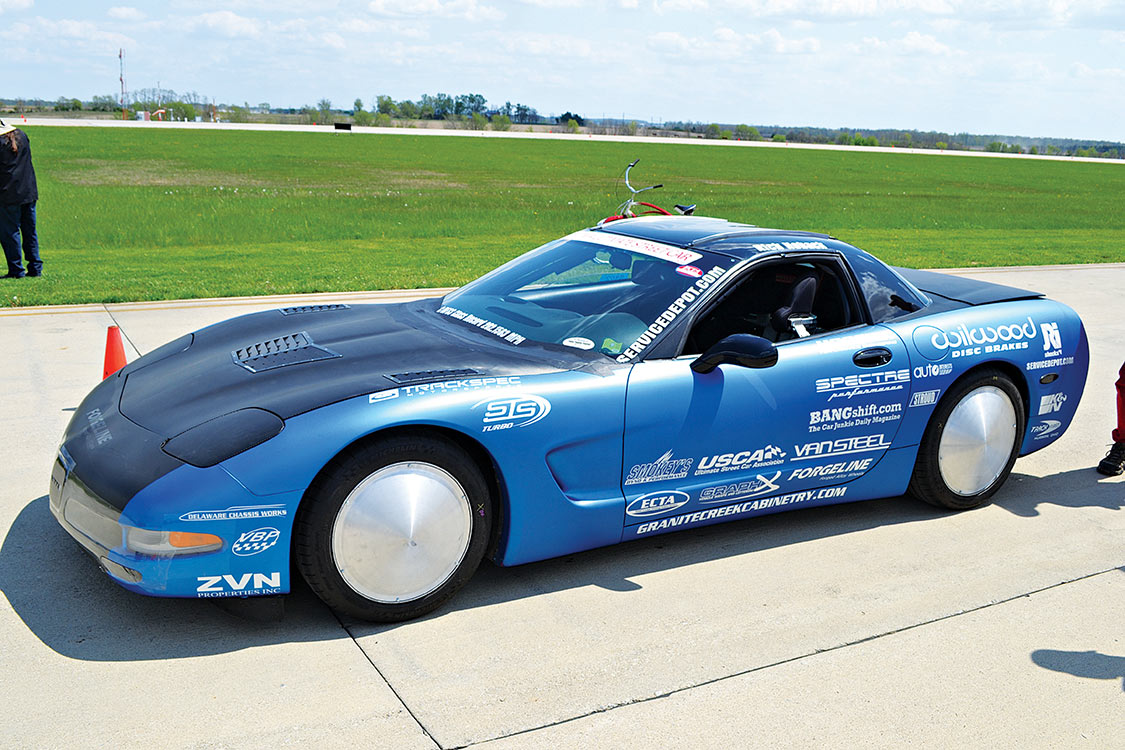
The event has grown in size and scope each year. The event has also spawned its own TV series, “Optima’s Search for the Ultimate Street Car,” which airs on cable network MAVTV.
While vehicles are still selected right off the SEMA Show floor every year for the OUSCI, additional competitors are now invited through a series of qualifying events that take place at tracks all across the country, throughout the year. Cars and trucks competing in these events will go through five different elements to determine which vehicles will be invited to the 2015 OUSCI. Since it is an event for street-driven vehicles, all competing cars and trucks must be street-legal, licensed and registered. They will pass a rigorous tech inspection as well as show car judging. They must also complete a road rally that takes place on public roads around the track and will involve several checkpoints.
Some forms of racing limit makes and models; Optima’s Search for the Ultimate Street Car, however, offers competitors and fans the opportunity to see virtually any year, make and model of production vehicle square off in a head-to-head competition for the right to be called “the ultimate street car.”